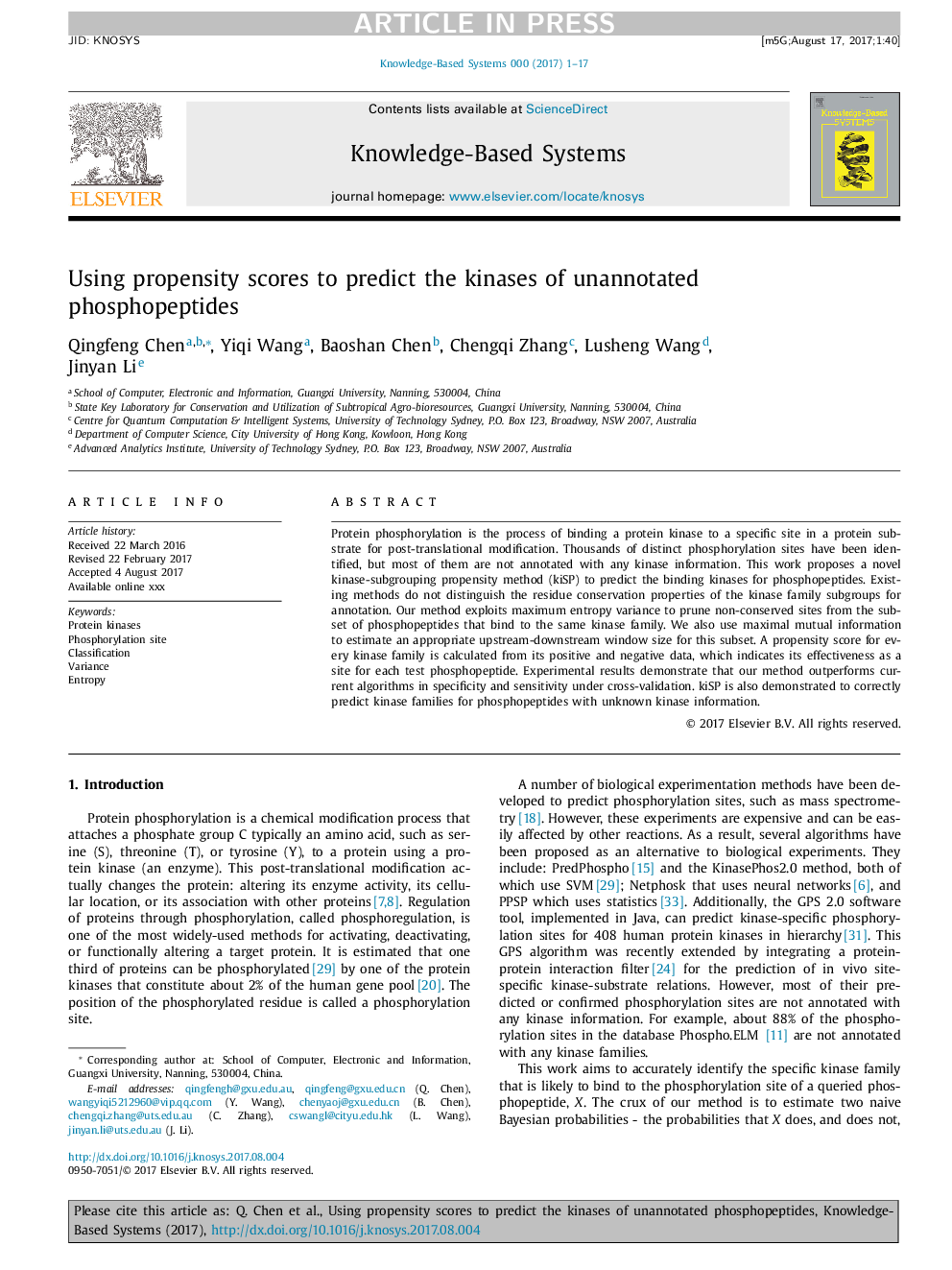| Article ID | Journal | Published Year | Pages | File Type |
|---|---|---|---|---|
| 4946051 | Knowledge-Based Systems | 2017 | 17 Pages |
Abstract
Protein phosphorylation is the process of binding a protein kinase to a specific site in a protein substrate for post-translational modification. Thousands of distinct phosphorylation sites have been identified, but most of them are not annotated with any kinase information. This work proposes a novel kinase-subgrouping propensity method (kiSP) to predict the binding kinases for phosphopeptides. Existing methods do not distinguish the residue conservation properties of the kinase family subgroups for annotation. Our method exploits maximum entropy variance to prune non-conserved sites from the subset of phosphopeptides that bind to the same kinase family. We also use maximal mutual information to estimate an appropriate upstream-downstream window size for this subset. A propensity score for every kinase family is calculated from its positive and negative data, which indicates its effectiveness as a site for each test phosphopeptide. Experimental results demonstrate that our method outperforms current algorithms in specificity and sensitivity under cross-validation. kiSP is also demonstrated to correctly predict kinase families for phosphopeptides with unknown kinase information.
Related Topics
Physical Sciences and Engineering
Computer Science
Artificial Intelligence
Authors
Qingfeng Chen, Yiqi Wang, Baoshan Chen, Chengqi Zhang, Lusheng Wang, Jinyan Li,
